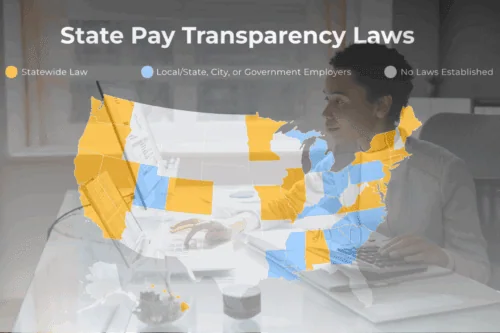Welcome to our in-depth look at federal anti-discrimination laws, an essential read for everyone entering the workforce. Whether you are an entry-level job seeker or looking to pivot your career, this guide provides key insights into the laws that safeguard against discrimination in the workplace. Here, you will find a breakdown of the main statutes, their enforcement, the rights they protect, and real-world applications that illustrate their impact. Start exploring to empower yourself with knowledge and ensure your work environment respects and upholds equality.
Understanding Federal Anti-Discrimination Laws
Federal anti-discrimination laws are a critical foundation in safeguarding the rights and opportunities of individuals in various sectors of the United States. These laws prohibit discrimination based on race, color, religion, sex, nationality, disability, and age.
Basic Principles
These laws ensure that everyone has equal access to opportunities without prejudice:
- The Civil Rights Act of 1964: Addresses discrimination in employment and public accommodations.
- The Americans with Disabilities Act (ADA): Prohibits discrimination against individuals with disabilities in all areas of public life.
- The Age Discrimination in Employment Act (ADEA): Protects individuals who are 40 years of age or older from employment discrimination.
Where These Laws Apply
Federal anti-discrimination laws apply to various areas, including but not limited to:
- Employment
- Housing
- Education
- Access to public facilities
Importance of Awareness
Understanding these laws helps both employers and employees. Employers can prevent legal issues, and employees can know their rights. Visit the U.S. Equal Employment Opportunity Commission (EEOC) laws for a deep dive into the specific provisions of these laws, including information on your rights and how to seek redress.
Key Federal Anti-Discrimination Acts
Federal anti-discrimination laws encompass several key acts, each designed to protect specific groups of people and address different forms of discrimination. Here, we explore the most transformative legislation.
Significant Anti-Discrimination Acts
Below are essential acts integral to upholding federal anti-discrimination laws:
- Title VII of the Civil Rights Act of 1964: Prohibits employment discrimination based on race, color, religion, sex, or national origin.
- The Equal Pay Act of 1963: Ensures that people of all genders who perform substantially similar work are provided pay equity.
- The Fair Housing Act: Intended to eliminate discrimination concerning the sale, rental, and financing of housing based on race, religion, national origin, or sex.
Expanding Protections
Some acts have been amended over time to provide broader protections:
- Title I of the Americans with Disabilities Act: Originally passed in 1990, this act now also includes protections against discrimination based on disability in all areas of public engagement.
- The Age Discrimination Act of 1975: Protects individuals aged 40 and over from discrimination in all aspects of employment, including hiring, promotions, layoffs, and benefits.
The Office of Federal Contract Compliance Programs (OFCCP) also provides comprehensive resources and guidance to get a broader context on employment law protections.
How These Laws Are Enforced
Enforcement of federal anti-discrimination laws is crucial to maintain fairness and equality in various settings. This process involves several federal agencies and steps.
Primary Enforcement Agencies
Several government entities are tasked with the enforcement of these laws:
- The Equal Employment Opportunity Commission (EEOC) handles workplace discrimination.
- The Department of Housing and Urban Development (HUD) investigates discrimination in housing.
- The Department of Education’s Office for Civil Rights (OCR) manages discrimination issues in educational institutions.
Complaint Filing Process
Moreover, individuals who believe they have been discriminated against must follow a specific procedure:
- Filing a complaint with the appropriate agency.
- The agency reviews the complaint and decides whether to pursue the case.
- If pursued, the agency may mediate or require corrective actions from the violating party.
Additionally, victims may seek legal counsel to assist with their cases. Learning the responsibilities and processes involved in filing a discrimination claim can smooth out the initial steps for victims.
Impact on Employment and Workplace
Federal anti-discrimination laws have significantly shaped workplace dynamics across the United States. These laws promote a more inclusive and equitable working environment.
Enhanced Diversity and Inclusion
The implementation of these laws has led to:
- Increased diversity in hiring practices.
- An improved workplace culture that supports equality and inclusivity.
Preventive Measures and Policies
Furthermore, these laws encourage organizations to adopt preventive measures:
- Development of comprehensive anti-discrimination policies.
- Regular training sessions for employees on diversity and anti-discrimination practices.
Impact on Employee Relations
Also, these regulations affect how employees interact:
- Promoting respect and understanding among diverse workforce groups.
- Reducing instances of workplace conflicts related to discrimination.
The Office of Disability Employment Policy (ODEP) website provides more information about the specific benefits of workplaces that champion diversity.
Guidelines for Employers
Adherence to federal anti-discrimination laws is mandatory for all employers. Here are fundamental guidelines to ensure compliance and promote a discrimination-free workplace.
Creating an Inclusive Policy
Every employer should:
- Develop and enforce a clear anti-discrimination policy.
- Ensure the policy is well communicated to all employees.
Training and Education
Training programs are essential:
- Conduct regular training sessions on anti-discrimination laws and company policies.
- Use training to build awareness and reduce biases.
Handling Complaints
Effectively managing discrimination complaints is crucial:
- Set up a straightforward process for employees to report discrimination.
- Take immediate and appropriate action when complaints arise.
Employers can refer to the EEOC’s guide for small businesses for assistance in developing anti-discrimination policies.
Rights and Protections for Employees
Understanding the rights and protections afforded by federal anti-discrimination laws helps employees defend against workplace injustices and ensures equal treatment.
Right to a Discrimination-Free Workplace
Employees are entitled to:
- Work in an environment free from discrimination based on protected characteristics.
- Equal treatment in hiring, promotion, job assignments, and salaries.
Protection Against Retaliation
Additionally, these laws protect employees who:
- File a discrimination complaint.
- Participate in an investigation or trial related to discrimination claims.
Legal Recourse and Support
Employees have the right to:
- Seek legal recourse if they experience discrimination.
- Access legal and emotional support through various organizations.
Case Studies: Federal Anti-Discrimination Laws in Action
Examining real-world case studies of federal anti-discrimination laws provides insights into their application and efficacy. These scenarios underscore the importance of these laws in promoting justice and equality without directly calling them out.
Workplace Discrimination Case
An example occurred in a large corporation where a qualified female employee was repeatedly passed over for promotion due to her gender. The EEOC intervened, resulting in:
- Back pay for the employee.
- A mandated corporate policy revision.
Housing Discrimination Incident
In another case, a landlord faced penalties for refusing to rent to individuals based on racial discrimination. Actions taken included:
- Fines and legal sanctions against the landlord.
- Compensation for the victims.
Educational Access Challenge
A significant case involved a university that was sued for bias in admissions processes based on race. The settlement included:
- Modification of the admissions policies.
- Training for staff on anti-discrimination laws.
These cases illustrate powerful examples of enforcement and the impact of upholding these critical laws. For more detailed discussions, visit the U.S. Department of Justice Civil Rights Division case document archives.
FAQs
Frequently asked questions regarding federal anti-discrimination laws help clarify common queries and enhance understanding for individuals seeking to navigate these regulations effectively.
What constitutes discrimination under federal laws?
Discrimination involves unfair treatment based on race, color, religion, sex, nationality, disability, age, or genetic information.
How can I report a discrimination incident?
You can file a complaint with the relevant federal agency, typically the EEOC, or seek legal assistance if needed.
Are small businesses also subject to these laws?
Yes, most federal anti-discrimination laws apply to all employers with at least 15 employees.
What remedies are available if I’ve been discriminated against?
Remedies may include job reinstatement, back pay, compensatory and punitive damages, and changes to the employer’s practices.
Can I be fired for complaining about discrimination?
No, federal laws protect against retaliation for filing a complaint or participating in an investigation.
Conclusion
Federal anti-discrimination laws are crucial for promoting equality and preventing biases in multiple facets of the public and private sectors. Understanding these laws is vital for employers to maintain compliance and for employees to protect their rights. We hope this guide serves as a valuable resource in aiding you in navigating through the complexities of these regulations.
Join Our Community
Join Diversity Employment and upload your resume today! Stay updated with current practices and empower your next employment opportunities. We’re committed to helping you find diverse staffing jobs with a workplace where diversity is valued, and equality is upheld. Join today and take a proactive step towards enriching your professional life!




